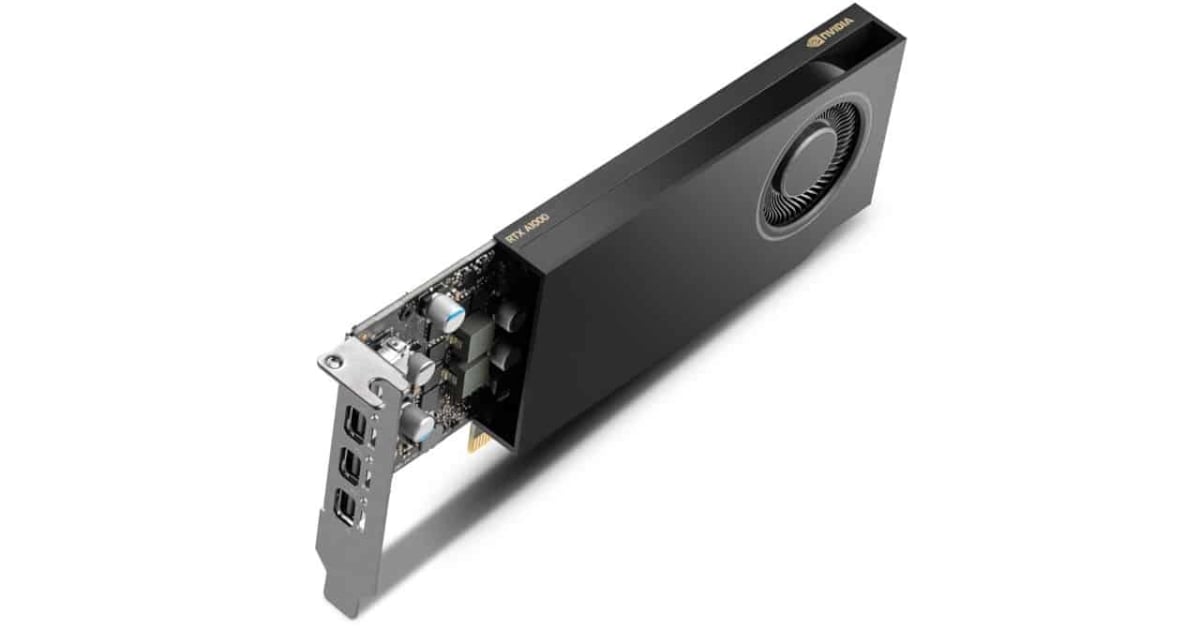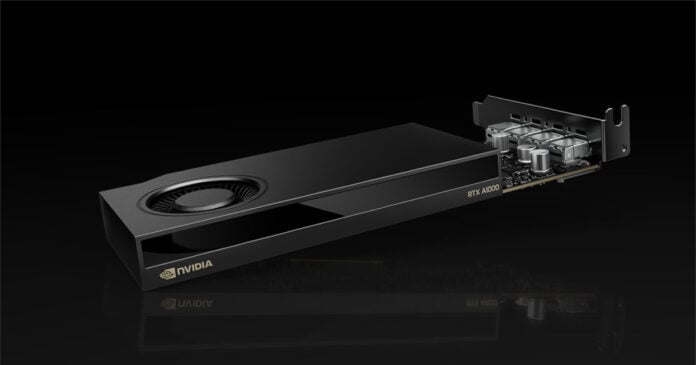Nvidia is repurposing Ampere architecture as entry-level, RTX-capable AI GPUs. RTX A400 and RTX A1000 will replace the Turing-based T100, T600, and T400 lineup, which launched in 2021. These two cards are the first in Nvidia’s entry-level professional GPU lineup to introduce Tensor and RT Core technologies.
The duo aims to significantly boost performance in AI processing and RTX rendering applications. At first glance, they’re quite sleek-looking, featuring a low-profile, single-slot design. What’s more, these GPUs have no external power connectors and are run solely through their PCIe connection. This is because these cards have a low power envelope of just 50W, making them ideal candidates for compact, energy-efficient workstations.
What’s under the hood is up for debate, but based on the specs it seems that the A1000 and A400 utilise cut-down variants of Nvidia’s GA107 GPU found in RTX 3050 cards. The A1000 is the most powerful and is the closest comparison to the Nvidia RTX 3050.
What’s inside?
As such, RTX A1000 offers 2,304 CUDA cores, 72 Tensor cores, and 18 RT cores, with a boost clock of 1,460MHz. The card is mated to 8GB of GDDR6 memory across a 128-bit memory bus and has a maximum bandwidth of 192GB/s thanks to the 12Gbps memory speed. This translates to up to 6.74 TFLOPS of FP32 compute performance.
Meanwhile, RTX A400 appears to be a severely cut-down version of the very same die. I suppose the biggest draw for these cards is that it might be a deep-value alternative to the retired T400. Still, this means Nvidia would have to price the RTX A400 quite aggressively.

Nevertheless, it offers 768 CUDA cores, 24 Tensor cores, 6 RT cores, and a boost clock of 1,755MHz. It is married to 4GB of 12Gbps GDDR6 memory across a 64-bit bus, equating to a maximum bandwidth of 96GB/s, translating to 2.7 TFLOPS of compute performance. As for I/O, both cards feature a quartet of Mini DisplayPort 1.4a connections. Each of these can output a 4K resolution at 120Hz refresh rate, or a maximum resolution of 8K at 30Hz.
Finally, video editors and streamers take note, as A1000 and A400 have slightly different rendering capabilities. A1000 has two NVDEC decoders and one NVENC encoder. A400, on the other hand, only gets access to one NVDEC decoder and one NVENC encoder. This means, at the very least, these cards offer full support for H264 or H265 codecs but lack AV1 encoding support.
Pricing is not yet available, though it is confirmed that PNY and Ryoyo Electric are official board partners. RTX A1000 will be available starting today through its distribution partners. Meanwhile, the RTX A400 will hit distribution channels in May.

